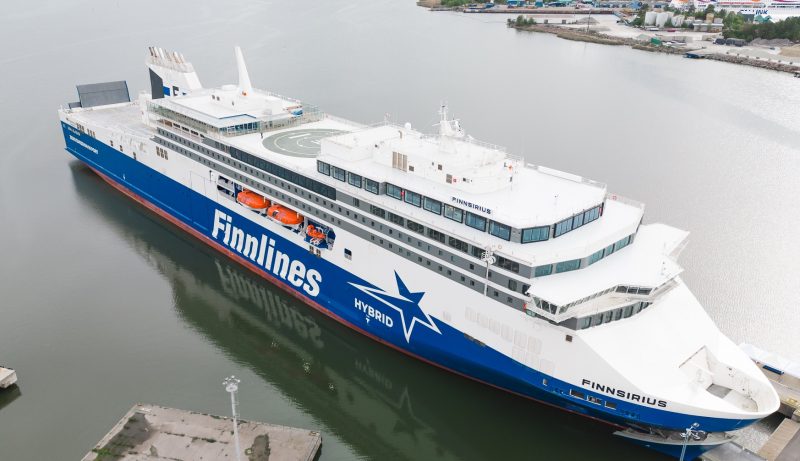Modern and highly sophisticated ships
Superstar ro-paxes are very modern and innovative vessels using several energy saving technologies.

Shore power for emission-free port calls
The ro-pax vessels are 235 metres long with a cargo capacity of 5,200 lane metres. In other words, the vessels have the capacity to carry approximately 200 cars and 300 lorries per voyage. A Superstar ro-pax vessel can carry a huge amount of cargo, but also 1,100 passengers.
Finnlines has used a lot of time to design cargo handling and its processes so that the vessel will have the best possible cargo system for the planned route. The cargo capacity has increased by over 40% compared with the previous ships on the Finland-Sweden route.
Environmental aspects and sustainability are given high priority. The vessels are equipped with a shore connection and can plug into the local power grid for quiet and emission-free port stays. The hybrid solution will reduce fuel consumption and allow zero emissions at berth. The noise during the stay in port will also decrease.
Operational aspects
- Hull lines designed to optimise energy efficiency
- Rudder bulb to increase energy efficiency
- The vessel will comply with Ice Class 1A Super
More efficient cargo loading
- Automooring at berth will ensure faster mooring and more efficient port operations.
Environmental aspects
- Use of shore-side electricity in port to reduce fuel consumption, emissions and noise
- An innovative air lubrication system to create bubble layers, which will reduce hull resistance
- Battery banks: lithium-ion battery systems to enable clean energy to be used onboard
Clean technology used in Superstar ro-pax vessels
Finnlines’ Superstar ro-pax vessels will be using the latest technologies and innovations.
Battery banks
Lithium-ion battery systems to enable zero-emission operations and to reduce noise in port
Promas Lite
Promas Lite systems to increase energy efficiency
Air lubrication
An innovative air lubrication system to create bubble layers which will reduce friction and hydrodynamic resistance
Optimised hull
Optimised hull lines to optimise efficiency
Main engines
Main engines type and size carefully selected to achieve the lowest possible fuel oil consumption
Shore power
Use of shore-side electricity in port to reduce fuel consumption, emissions and noise
Automooring
Automooring to ensure faster mooring and efficient port operations